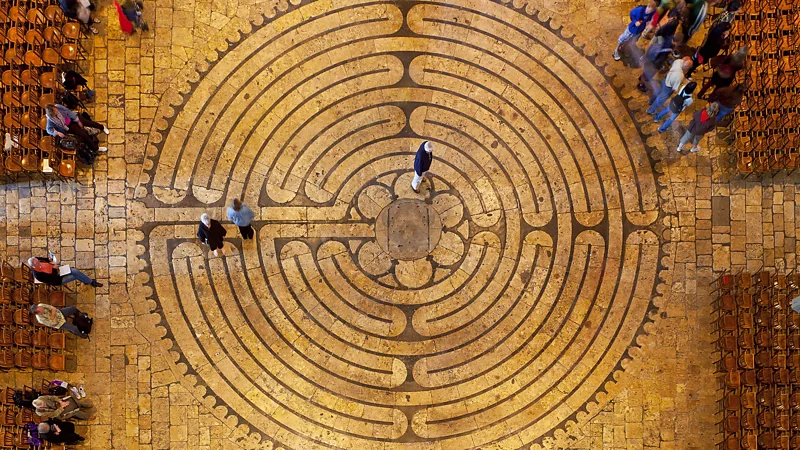I’m strolling leisurely through grassland that slopes gently; this is an area I was unaware of until I started doing research for this piece. Just a mile from my residence in the English seaside resort of Brighton & Hove, I’ve passed this park hundreds of times without realizing it had a labyrinth. It was made in 2006 by artist Chris Drury and was inspired by the intricate design of a massive, 40-meter-wide fingerprint made from stones pressed flat into the grass. I travel the twisting 600-meter+ trail, forgetting the runners and dog walkers around me as I concentrate on following its inward course and entering a more introspective mood.
Since ancient times, people have utilized labyrinths as a means to improve insight, reduce worry, restore equilibrium in one’s life, and calm the mind. Walking labyrinths were a feature of around 25% of cathedrals throughout the Middle Ages, and they are now a widely used, effective way to promote anti-stress by combining the mind and body.







